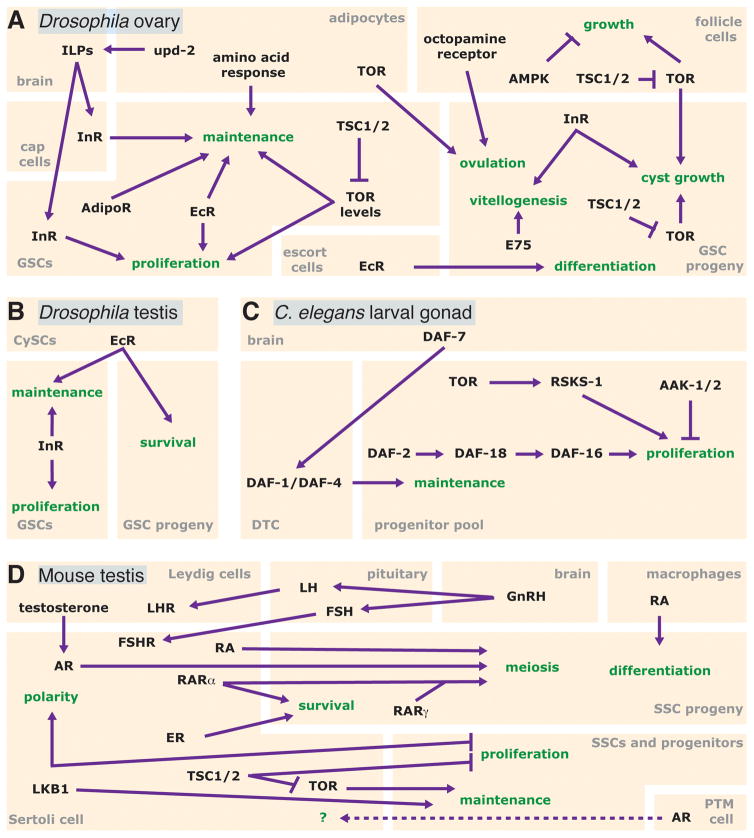Figure 3.
Cell type-specific requirements for diet-dependent pathways involved in the control of GSCs and their progeny. (A) In the Drosophila ovary, intrinsic, local, and tissue non-autonomous signals coordinately regulate the GSC lineage. In addition to the niche, the brain, follicle cells, and adipocytes all communicate with the GSC lineage as part of the response to diet. (B) GSCs in the Drosophila testis require InR intrinsically for maintenance and proliferation. EcR in cyst stem cells (CySCs) promotes GSC maintenance and the survival of their progeny. (C) In the developing C. elegans gonad, but not in the adult, proliferation is regulated intrinsically by insulin, TOR, and AMPK (AAK-1/2). TGFβ ligand (DAF-7) promotes progenitor pool maintenance via the distal tip cell (DTC). (D) The mouse SSC pool is regulated by Leydig, Sertoli, and peritubular myeloid (PTM) cells, as well as macrophages. An additional layer of control is provided by the hypothalamic-pituitary-gonad axis, which controls the activity of these somatic support cells to influence spermatogenesis. Biological processes are indicated in green and cell types in gray. For details, see text and Table 1.

